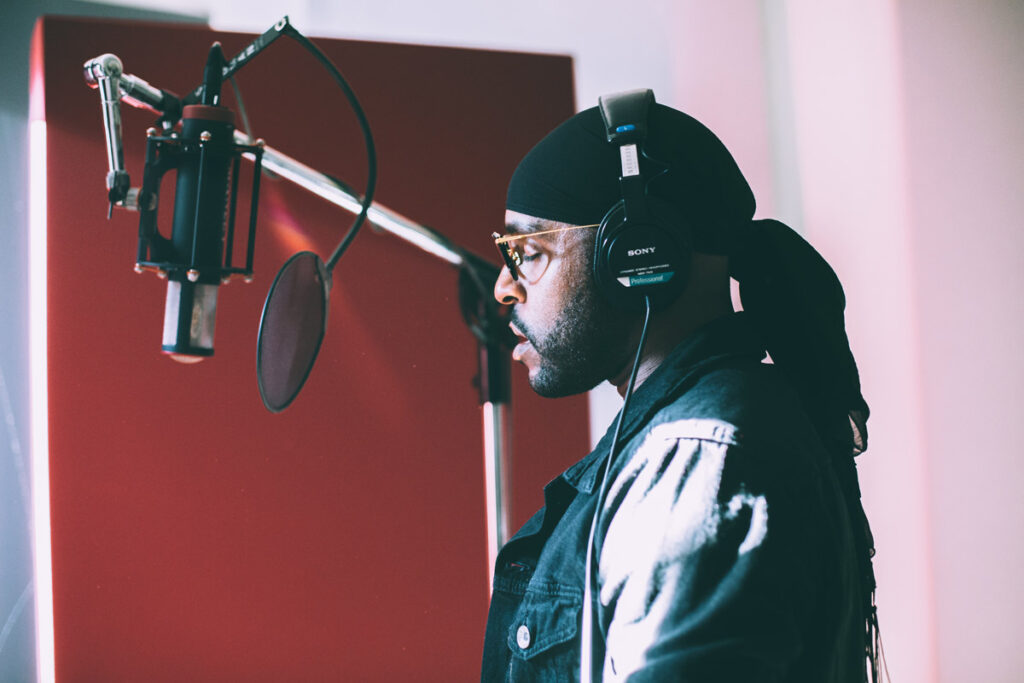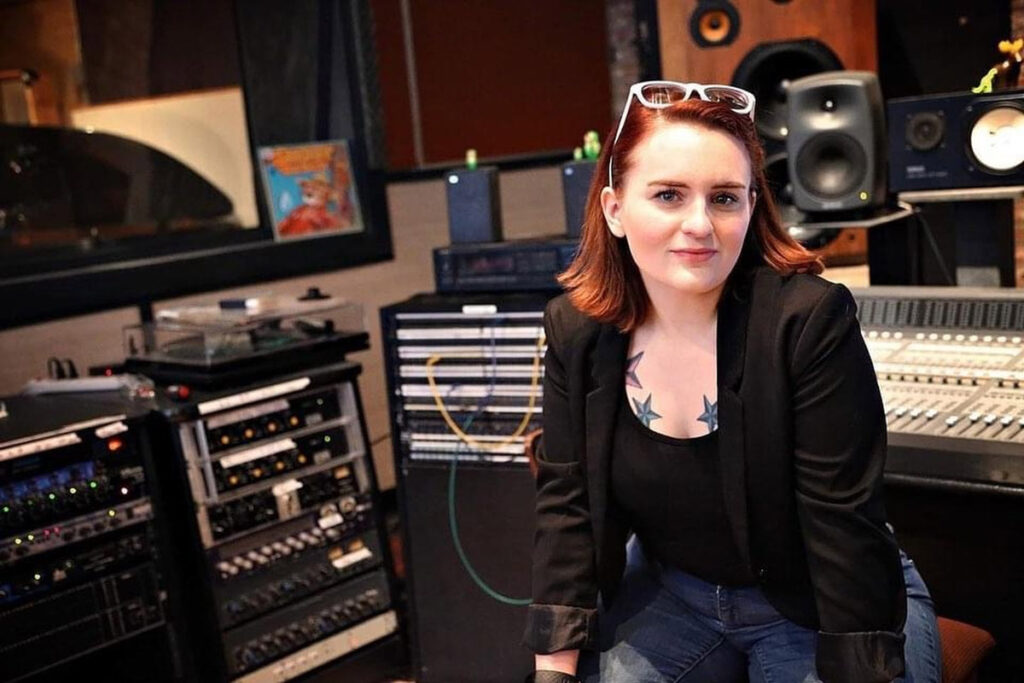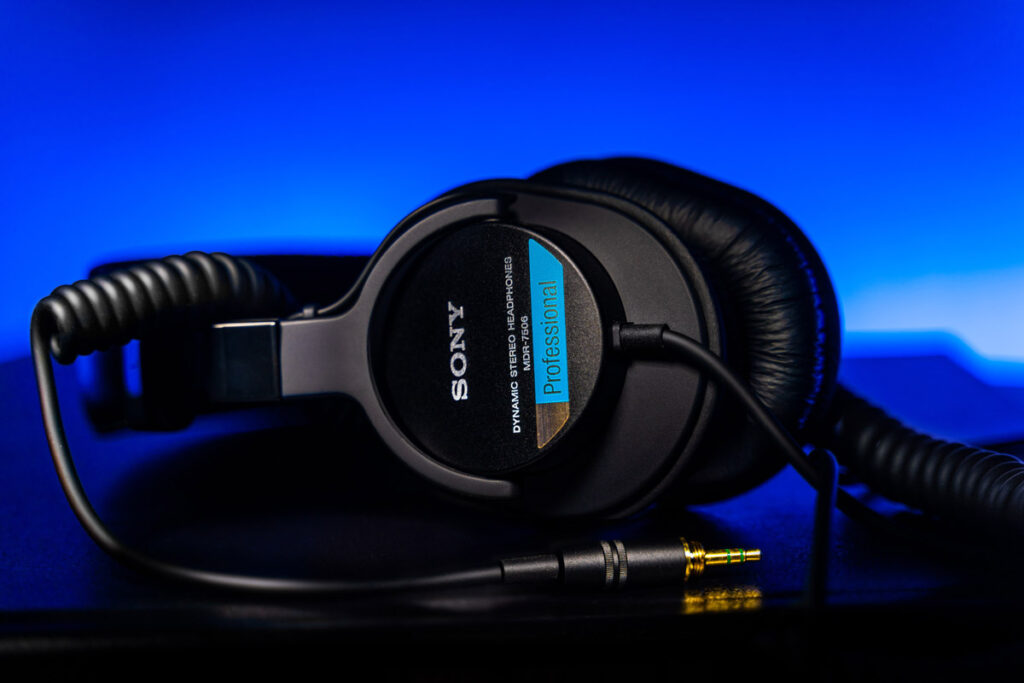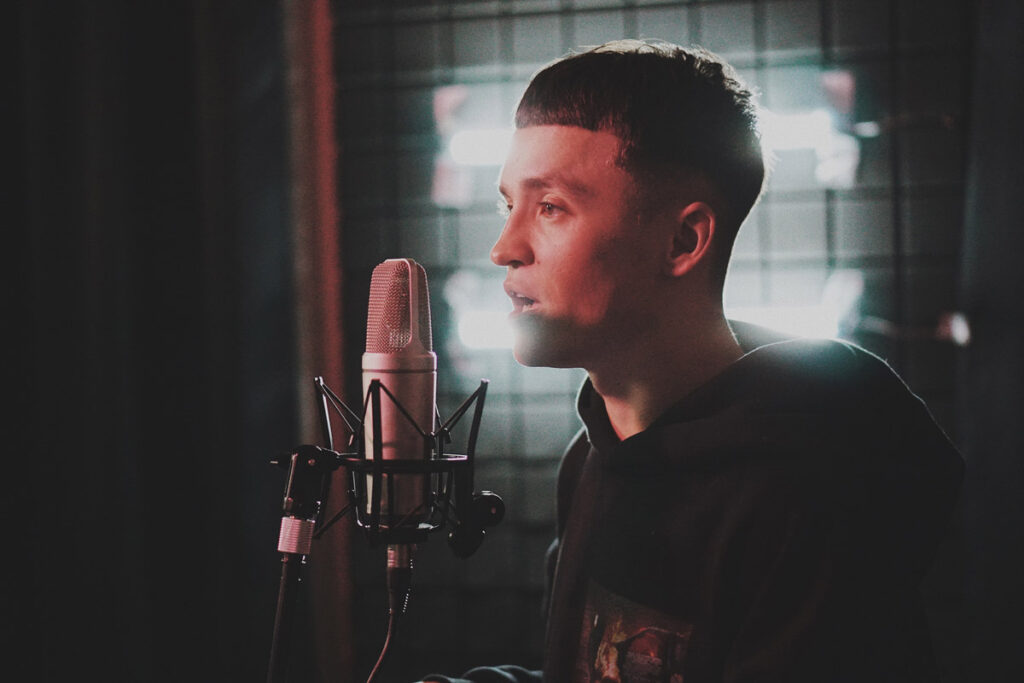The voice over industry has its own shorthand. Let’s look at some of the most commonly used voiceover jargon. These are the terms voice actors will hear in paid VO sessions.
What do you do if your client sends you a scratch before the record, but then changes the creative at the session – and the hero in the copy is totally different? And, wait… they wanna get a whole bunch of wilds for safety?
OK, that specific scenario is made up. But, believe it or not, those terms have actual meaning to voice actors.
Communicating effectively can help you stand apart from the pack, especially if you’re a beginner.
So let’s break down some of the most commonly used voiceover jargon voice actors will hear on the job in a paid session.
Voiceover Jargon: People

Talent
Yep, that’s you! As a voice actor, you have been hired – because of your talent – to read a script. Whether that’s as an announcer for a TV commercial, a character in a video game, an ADR voice match or as the narrator of an audiobook, if you hear reference to ‘the talent’ – even if you don’t hear your name – they’re talking about you as the voice actor.
Client
The client is the person or agency that hired you to do the voiceover. Keep in mind you may have multiple clients in one voice over session. For example: people from the creative agency, people from the company, etc.

Engineer
This is the sound engineer (AKA audio engineer). If you go in to a recording studio, it’ll be obvious who that is. The engineer is the person sitting at the soundboard, executing complex keyboard shortcuts and making everything sound doooope. But if you’re recording a session from home, you’ll likely remote ‘patch’ into an engineer who will be recording the audio files. We’ll cover what a patch is in a sec.
Voiceover Jargon: Session
Booking
If you’ve been booked, you’ve been hired. The booking is the agreement that you’ll all do this voiceover project together. You’re essentially reserved – or on the books (i.e. you’re booked at 10am on Tuesday at Sonic Union for Peloton. Or you’re booked for a remote record at 2pm on Wednesday for Coke).
Session / Record
The session is the time that has been set aside for the recording itself. Most commercial sessions are booked for about 2 hours. Also, when the voice actor is paid for showing up and reading, this is called a session fee. Sometimes a session is referred to as the record (pronounced like, “don’t forget to record Yellowstone on DVR.” And NOT like, “remember when you had to buy music at record shops?”).
Spot
A spot usually refers to a commercial. For example: if you were hired to voice a 60 second spot, and two 30 second spots, that’s three commercials.

Copy / Creative
The copy refers to the actual words in the script (the text you’re reading). If the client makes changes to the copy, they’re changing words. ‘Creative’ is a blanket term for anything that has been made specifically for this project. For example, in a commercial, the script is part of the creative. But so is the concept for the overall ad.
Scratch Track
This is a rough place holder VO. A quickly recorded file inserted into a video – usually as a reference for pacing. Copyrighters or producers commonly record a scratch track and drop the rough mix into the project to see how well their words work in the overall piece – and to give the voice actor timing cues.
VO Jargon: Equipment
Booth
This is the sound treated space the voice actor goes to record. At an in-person studio session, the booth is typically a space that is partitioned, separate from the larger control room where the clients and engineer are sitting. But when recording from home, your booth might be your office, a closet or a pillow fort.

Cans
Your headphones.
Bleed
If your monitoring headphones (cans) are too loud, the microphone may pick up any sound leaking out of them. That could be your voice – or any backing tracks. Bleed is bad.
Talkback / Talkback Button
There’s usually a mic attached to the engineer’s mixing console. The engineer and clients can speak with the voice actor in a recording session by pressing the talkback button. The voice actor hears them in their headphones – and replies by speaking normally into their microphone in the voiceover booth. Talkback is crucial for direction during a VO session. Not to be confused with a patch.
Patch
A patch is an umbrella term. It can be as simple as a phone call. Or as complex as a digital connection that allows people located in different places to work on the same project in real time. For example, Source Connect is a software that allows me to read a script at home in LA, have an audio engineer in New York record and edit the sound files – and have a client in London direct the entire session all at the same time via our internet connections.
Voiceover Terms: Recording Your Performance

Setting a Level
Before you record, the sound engineer may ask you to read in the tone and pitch you plan on using in the session. They are dialing in their settings so everything sounds good on their end – and making sure your voice doesn’t clip at your loudest point.
Cold Read
The voice actor is reading the script out loud without having had a chance to rehearse it beforehand. Essentially sight reading.

Run Through
This is a rehearsal read. You may do a run through to check timing – or to make sure that everyone is on the same page creatively.
Take
One time through. Basically, anytime you read the script, you complete a take. But a take can be the script in its entirety – or just one or two lines that the director wants delivered differently. And a take could be the same line, read three times in a row with changes to inflection in each. You get the idea.
Hero
The hero is a word or a phrase in the script that needs to be highlighted and given importance by the voice actor. Therefore, a good example of a hero would be a company name, a slogan – or a call to action.
Tags
Information read at the end of a commercial specific to location, a period of time or a legal requirement. For example, one main Honda Civic commercial may have separate APR tags recorded for 35 Honda dealerships in different regions of the country. Or a tag for limited time 20% off sale at Macy’s that will be tacked on to a commercial for a week.
Start Your Career as a Voice Actor
Voice Over: The Ultimate Beginner’s Guide
Voiceover Jargon: Refining the Performance
Wild
A wild line could be a variation of something in the script, or an ad lib that isn’t in the script at all. It can also refer to the voice actor delivering the same line multiple times in a row with different inflection each time. Wilds are usually requested when the production team wants to give the voice actor a little latitude, and see if they can bring something spectacular and unexpected to the table in terms of performance without a ton of direction. You’ll hear this all the time in voiceover: “We’ll know it when we hear it.”

Notes
When a director, producer or engineer gives you feedback on your performance, they’re giving you notes. Also, you might ask, “any notes?” if you’re hoping to drill down and hone your performance – and feel like a little clarification from the creative team might get you there.
Punch In
Re-recording a partial line, or part of the script – but not the whole thing. Let’s say the voice actor reads a line. The first half is perfect, the second half could be better. The engineer can play the first half of the line in the voice actor’s headphones, and record them speaking the second half into the mic. Then they just bash the two halves together and you’ve got a perfect line. When doing a punch in, the audio engineer may offer to play you in.
Voiceover Jargon: After the Session
Safety
A safety is a second take of the voice actor’s best read. For example, let’s say you NAILED the script on take 8. Everyone from the creative team and production are satisfied with your voiceover and how it works in their commercial. They’re happily going to use take 8 in the spot. That is, unless you can deliver a better take in the same style. The safety might be used in a couple of ways. First, since the pressure is off, the voice actor is more relaxed and honed in. It’s surprising how many times a safety read is better than the original select. You went gold on take 8 – but went platinum on 9. Second: the engineer may pillage a line or a phrase they like better from your safety take and – while they’re using the framework of take 8 – they’re editing in the company tagline from take 9.

Approval
When the production team is happy with the finished spot, they may need to get approval from someone else before they can call it a day. This might come from a superior, a creative director at the ad agency, a client at the company – or from an entire legal department. Sometimes the voice actor will need to return to the booth to record pick up lines or alter their performance based on the feedback received.

Knowing This Voiceover Jargon is Helpful, But Not Obligatory
Let’s be real here. No one is going to hold it against you if you’re a beginner voice actor who doesn’t know what a punch in is.
As in most things, when you don’t know what someone means, simply ask them to clarify. Because, in my experience, the people you’ll encounter in voiceover all want you to succeed.
And that includes the client who instructs you to, “just ignore the bleed on the scratch track.”
Trust me. They’ll gladly explain if you ask.
Plus, they hired you as voice talent. If you give them a dynamic read, that’s literally all they’ll care about at the end of the day.
And check out these other things beginner voice actors should know about:
- 9 Audition Tips for Beginner Voice Actors
- How Much Money Do Voice Actors Make?
- The One Thing Successful Voice Over Artists All Have in Common
- Why Commercial Voiceover Offers the Most Opportunities to Voice Actors
Plus:
Curious about how to start your voice acting career? Want to learn more about voice acting and the things beginners should know about the voice over industry? Bring your natural talent and check out my class for beginners!



Leave a Reply